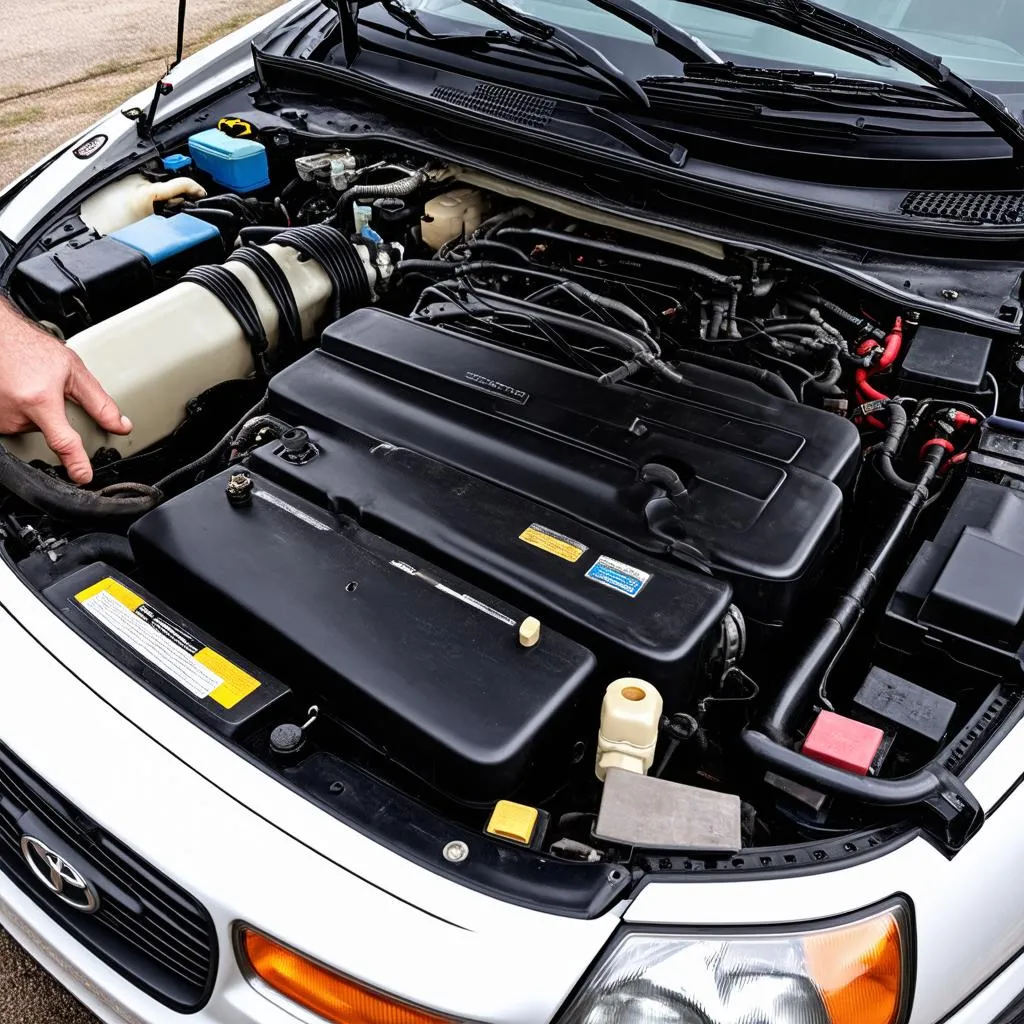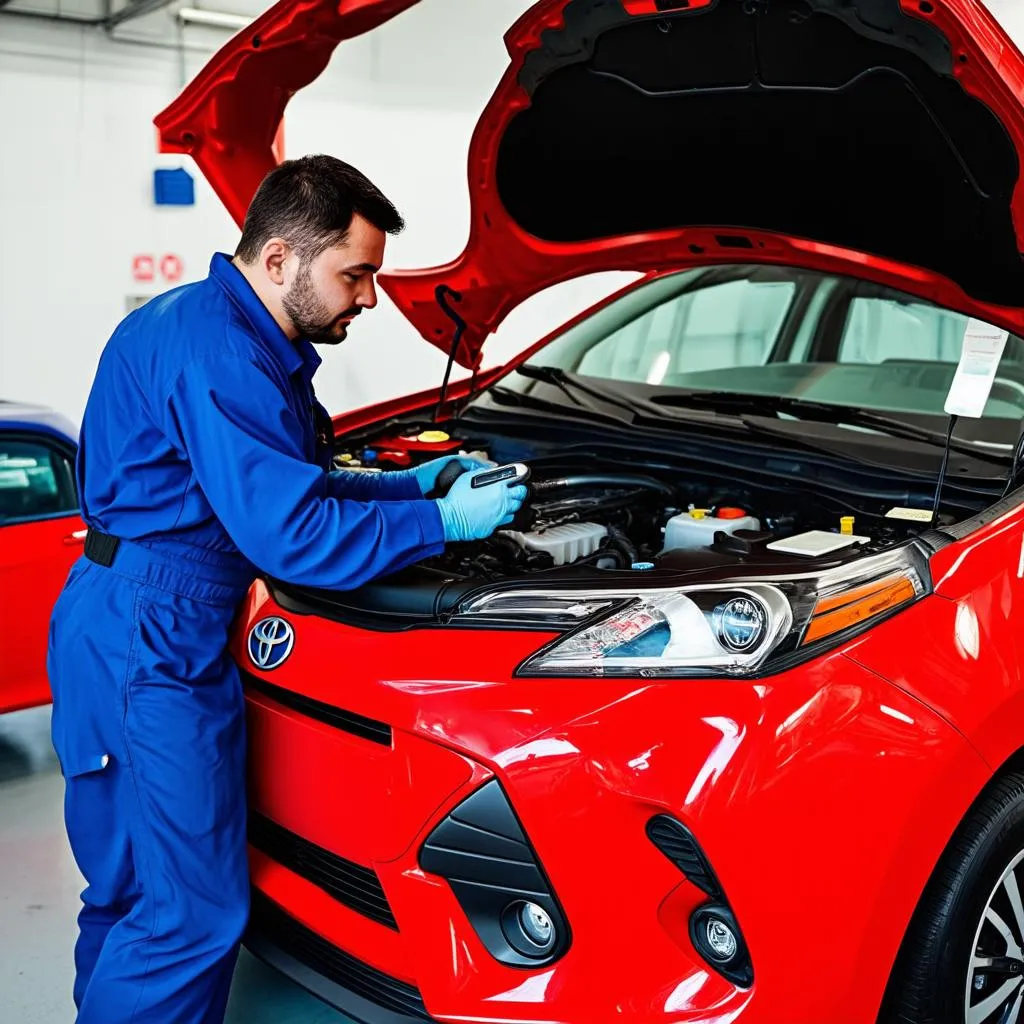Picture this: you’re cruising down Sunset Boulevard in your trusty 1993 Toyota Corolla, California sun warming your face. Suddenly, the “Check Engine” light decides to join the party. Frustrating, right? You know you need to get your car checked, but you also hear whispers about something called an “OBD port” being the key.
Don’t worry, you’re not alone! Many 1993 Corolla owners, and even some mechanics, find themselves scratching their heads when it comes to this early generation of On-Board Diagnostics (OBD). Let’s demystify the 1993 Toyota Corolla Obd Port and get you back to enjoying those scenic drives.
Understanding the 1993 Corolla OBD Situation
The way “OBD port” is often used throws a bit of a curveball for older cars. You see, 1993 was a transitional year in the automotive world. The standardized OBD-II system, commonly found in modern vehicles, wasn’t mandatory in the US until 1996. This means your ’93 Corolla likely has a different system altogether.
Here’s the key takeaway: While it might not have a typical “OBD-II port,” your 1993 Corolla still has a diagnostic connector. This connector, however, might use a different protocol, making it incompatible with standard OBD-II scanners.
Why Does It Matter?
“It’s just an old car,” you might be thinking. But knowing where to plug in that diagnostic tool is crucial for a few reasons:
- Mechanic Communication: Even if it’s not OBD-II, that connector allows mechanics (or a savvy DIYer like yourself) to tap into your car’s computer system. This access means they can read error codes, understand what’s triggering that pesky “Check Engine” light, and diagnose issues more efficiently.
- Potential Savings: Accurate diagnosis often translates to faster repairs, potentially saving you time and money at the mechanic.
Locating the Diagnostic Connector on Your 1993 Corolla
So, where is this mysterious connector hiding? While it might not be the familiar 16-pin OBD-II port you’re used to, finding it isn’t rocket science. Here are the most likely hiding spots:
- Under the Hood: Pop open your Corolla’s hood and look for a rectangular box labeled “DIAGNOSIS” or something similar. The connector is usually nearby.
- Under the Dashboard: If it’s not under the hood, check beneath the driver’s side dashboard. It might be tucked away near the steering column or fuse box.
 1993 Toyota Corolla Diagnostic Connector Location
1993 Toyota Corolla Diagnostic Connector Location
Troubleshooting Your 1993 Corolla
Now that you’ve found the connector, what’s next?
- Consult Your Owner’s Manual: Your Corolla’s manual is your best friend. It often contains diagrams and instructions specific to your model year.
- Seek Professional Help: For more complex issues, consulting a mechanic specializing in Toyota vehicles is always a wise move. They have the experience and specialized tools (including Toyota-specific scanners) to accurately diagnose and fix the problem.
Common Questions About the 1993 Toyota Corolla Diagnostic Port
- Can I use a regular OBD-II scanner on my 1993 Corolla? Most likely not. Your car predates the OBD-II standard, so you’ll need a scanner compatible with older Toyota protocols.
- What if I can’t find the connector? Don’t hesitate to consult a mechanic or your local Toyota dealership. They’re familiar with these older models and can quickly pinpoint its location.
Beyond the 1993 Corolla: More Tech Car Resources
Looking for more tips on maintaining your car or understanding its intricate systems? Tech Car USA has you covered! Check out these other helpful articles:
- 1993 Toyota Corolla OBD Connector
- Understanding Your Car’s Electrical System
- DIY Car Maintenance Tips
 Mechanic Using Diagnostic Scanner on a Toyota
Mechanic Using Diagnostic Scanner on a Toyota
Need Help with Your Car Diagnostics?
Car troubles got you feeling stuck? Don’t worry, we’re here to help! Contact our team of auto experts on Whatsapp at +84767531508. We’re available 24/7 to assist you with any questions, from understanding diagnostic codes to finding the right tools for your needs.
Remember, keeping your 1993 Corolla running smoothly might require a little extra detective work, but with the right knowledge and resources, it’s a challenge you can easily overcome. Safe travels!